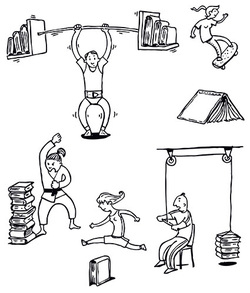
This method implies that three workbooks are produced.
The workbooks contain information and questionnaires that are distributed to selected study groups. The first workbook brings up current issues to be discussed. In parallel with the study groups answering Workbook One, new study circles are started also discussing the current issues. The answers from Workbook One and the study circle are compiled in Workbook Two. In addition, Workbook Two is supplemented with more questions, and once again sent out to the citizens. The comments from Workbook Two are compiled in Workbook Three, and this book is the final result and the basis for the politicians’ decision-making. This method takes about a year to perform, which is one of its disadvantages. Otherwise, it is efficient in communicating knowledge and providing a well-founded dialogue. (de Laval 1999)
The workbooks contain information and questionnaires that are distributed to selected study groups. The first workbook brings up current issues to be discussed. In parallel with the study groups answering Workbook One, new study circles are started also discussing the current issues. The answers from Workbook One and the study circle are compiled in Workbook Two. In addition, Workbook Two is supplemented with more questions, and once again sent out to the citizens. The comments from Workbook Two are compiled in Workbook Three, and this book is the final result and the basis for the politicians’ decision-making. This method takes about a year to perform, which is one of its disadvantages. Otherwise, it is efficient in communicating knowledge and providing a well-founded dialogue. (de Laval 1999)
 RSS Feed
RSS Feed
